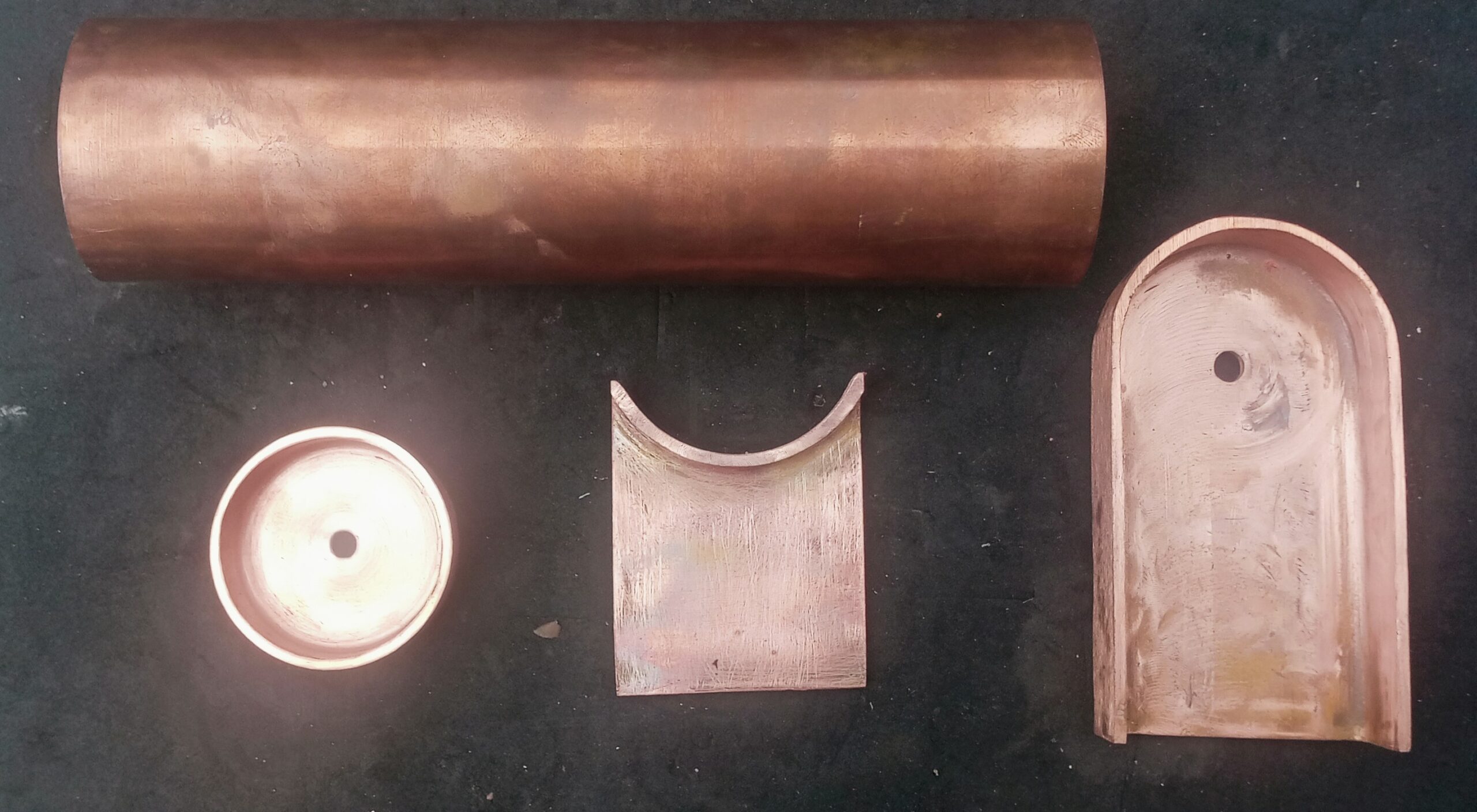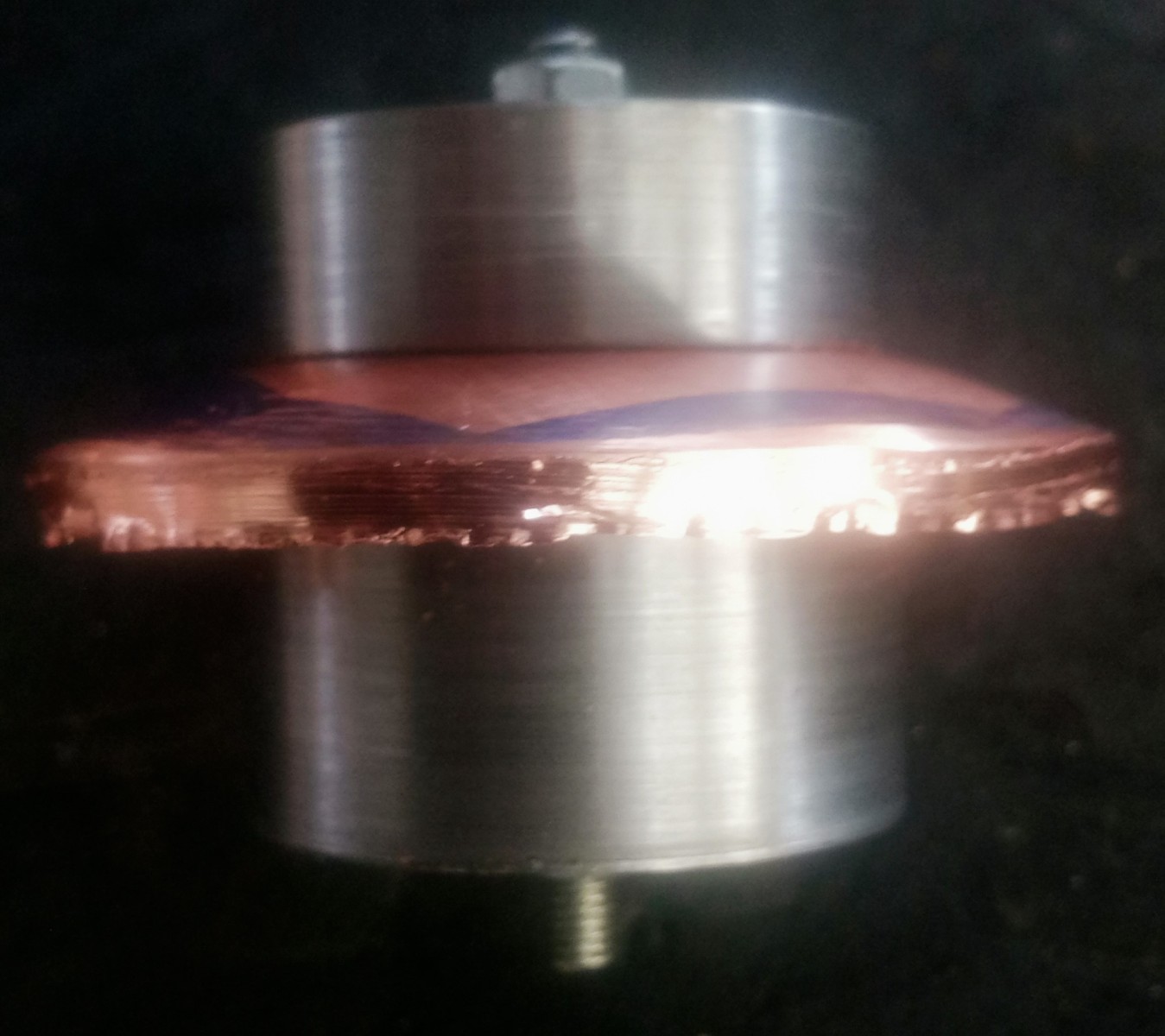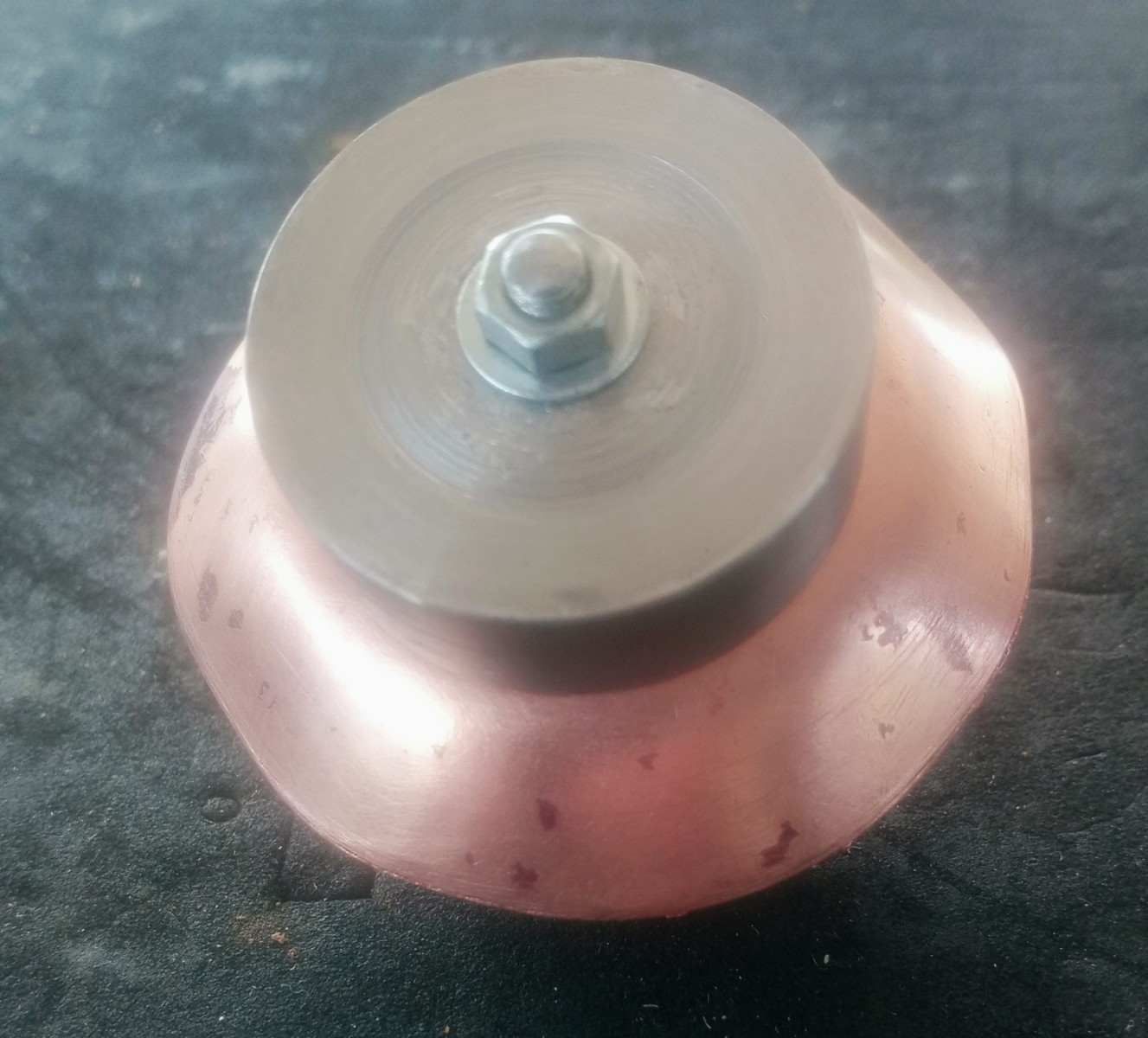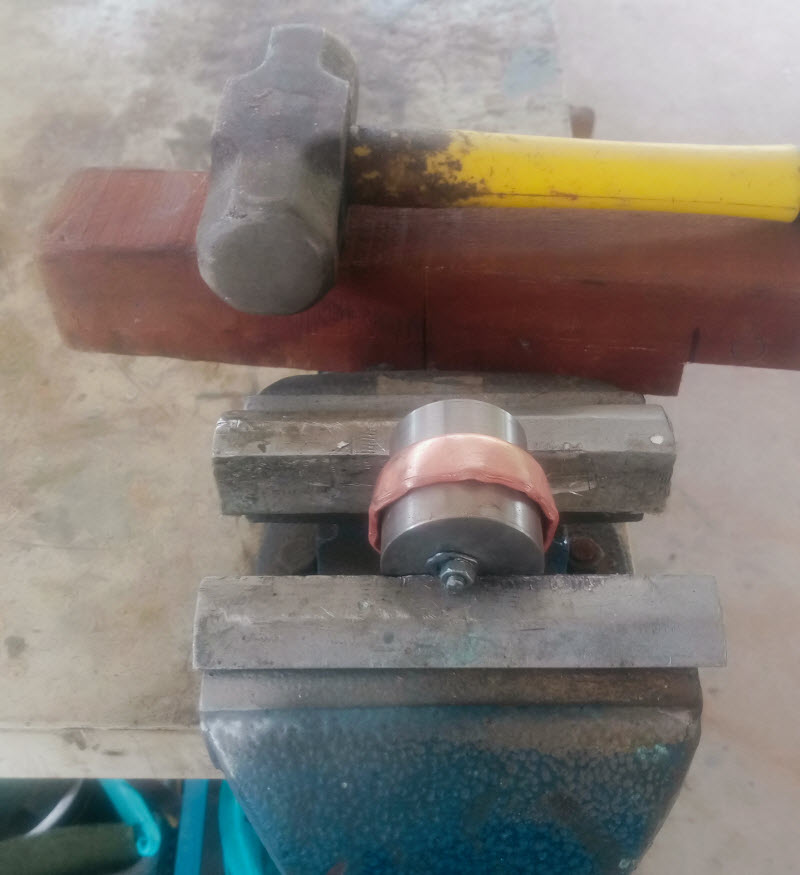Flanging The Boiler Plates
Here is a photo of all the boiler barrel and all boiler plates finish-flanged ready to start drilling the various holes, for stays, tubes and bushes and then building the boiler.
Flanging The Smokebox Tubeplate (Frontplate)
Since this is the first time I’ve ever made a boiler – of any kind – I thought I’d better start the flanging process with the simplest part – the Smokebox Tubeplate. At least that’s the name for this item in a boiler that has smoke tubes, but this boiler being a simple pot boiler with water tubes doesn’t have any smoke tubes – so it’s really a Front Plate.
The Flanging Former
I made this from steel. A simple disk with the corner radiused and a hole in the centre to allow the copper boiler blank to be attached. This hole will later be used to take a longitudinaI stay. I also made a steel backing plate as shown in the photo below.
I had read in a well-known book on model boilers and boilermaking that a wooden mallet should be used to form the flanges. I didn’t have one so I went out and purchased a hammer with plastic caps just for this purpose. More on this later.
The Copper Sheet Material
I found some suitably sized copper sheet material in my sheet metal store that I must have purchased some time ago, and then forgot that I had ever done so. Anyway there were a few copper plates of roughly the right size for the boiler so I decided to use them. The thickness of the sheets is 7/64″, 0.109″, 2.78mm – halfway between SWG 11 and SWG 12 – or 1/64″ under 1/8″. Don’t ask me why I had purchase plate of this thickness, ’cause I can’t remember but it seemed plenty thick enough so this is what I used. The dimension 7/64″ is shown in all my CAD drawings.
(By the way if you’re a bit shocked by my casual “it seemed plenty thick enough” I did go on to verify the adequacy of this thickness by calculation and reference to published data and which I’ll explain in detail later.)
Forming The Frontplate Flange
The first photo shows the Bassett Lowke traction engine model boiler blank frontplate, formers and the forming hammer.
The photos in the gallery below show the first round of flanging. I then trimmed off the ragged edge in the lathe before continuing. Then the copper plate was annealed and the process repeated. This Gallery shows the first round of forming:-
The next Gallery shows subsequent stages of flanging the front plate with annealing between each stage, all the way up to the finished flange:-
You have To Be Brutal To Form Copper!
If you did browse through the images in the above Gallery, you’ll have noticed that image 8 shows the copper plate and former in a bench vice with a large 3 1/2 lb hammer and piece of hardwood. Here is the image:-
I was finding at this stage of forming the boiler plate flange that my little plastic hammer was becoming more and more ineffective. So I had to switch over to the big 3 1/2 lb hammer and hardwood piece you see in the photo above. With the steel former held in the steel bench vice as shown I belted the wooden former laying on the copper as hard as I could. Of course, annealing the copper each round of forming.
By the way that simple round steel backing plate is essential to keep the main body of the copper plate flat.
This goes completely against all the recommendations of the experts!
One such expert who wrote a well-known book on model boilermaking said something along these lines:- “heavy hammers are not required, light ones are preferred” and he refers to a selection of suitable hammers, the heaviest being 16oz. (1 lb)
Another expert who wrote another well-known book on model boilers and boilermaking taught that “a hardwood mallet is recommended” and that “quite light blows are sufficient”.
Well, my experience is completely different!
Other Pages In This Section





Very nice bit of forming. The thickness of the copper, the small diameter of the job and the very long lip might have something to do with the heavier hammer required.